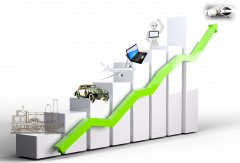Kari Lilja, TkT, Erikoistutkija; Sirpa Sandelin, TkT, Yliopettaja
English version: Click the link.
Kevätkiireiden sanottiin ennen vanhaan maaseudulla kestävän sen ajan, minkä talon peltojen kyntäminen tai kylväminen roudan sulettua vaati. Niillä, joilla ei ollut maata, tai jotka eivät muuten tehneet maataloustöitä, ei voinut olla kiireitä.
Tänä päivänä yhä harvempi tekee maatöitä – ainakaan elääkseen – mutta siitä huolimatta kevätkiireet alkavat yhä aikaisemmin, kestävät pidempään ja rasittavat yhä useampaa ihmistä. Koulujen koe- ja tenttiruuhkat, kevään juhliin valmistautumiset, mökin kuntoon laitto… Puhumattakaan aikuisenoikeista töistä, työmatkoista, kokouksista, tilinpäätöksistä ja yhtiökokouksista. Jokainen varmasti tunnistaa ilmiön. Kun aurinko alkoi talven ja kaamoksen jälkeen kohota yhä korkeammalle, alkoi myös ihmisten aktiivisuus lisääntyä. Ne, jotka eivät ehdi kiireeseen mukaan, tallataan jalkoihin.
Kuvaannollisesti, ja joskus myös sananmukaisesti.
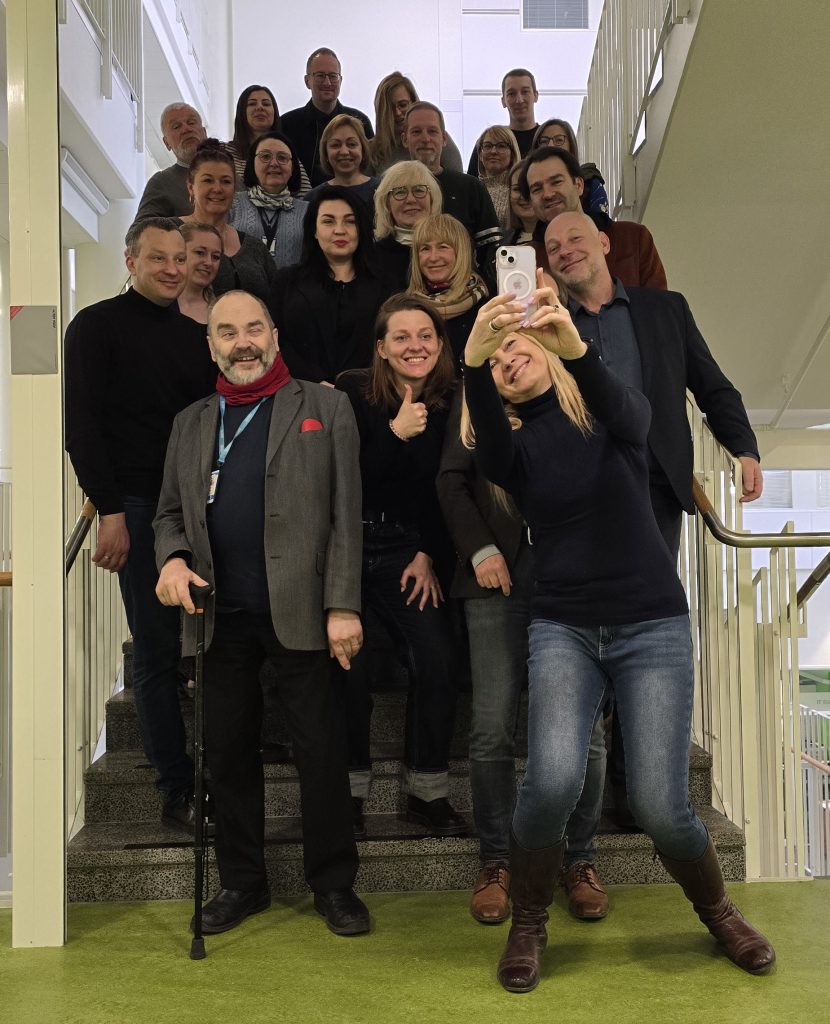
Meillä tätä kevättä ovat organisaatiomuutoksesta toipumisen, masters schoolin valintakurssien ja muiden rutiinien ohella rytmittäneet kaksi hankekokousta ja niihin valmistautumiset: Easy Energyn kaksipäiväinen workshop Porissa huhtikuun alussa, ja WIN4SMEn kolmipäiväinen workshop ja Train the Trainer – koulutus Koldingissa, Tanskassa, toukokuun alussa. Tahti on ollut sitä luokkaa, että täytyy oikein pinnistellä, jotta muistaisi, mitä tuossa välillä on tapahtunut.
Ilmeisesti ei yhtään mitään…
Easy Energyn kanssa samaan aikaan SAMKin Porin kampuksella oli myös kansainvälinen tapahtuma KV-päivät ja tehohoitajien valtakunnalliset koulutuspäivät. Säpinää siis piisasi. Kokouksen virallisen ohjelman, johon kuuluivat mm Porin kampuksen aurinkosähkö- ja maalämpöjärjestelmien sekä Kirkkokallion ekoteollisuuspuiston esittely, ohessa esittelimme – energiateemaa painottaen – myös porilaista panimokulttuuria, rakentamista ennen ja nyt (Viikkari ja Kuukkari, messualue, Kivipori ja Uimahalli), kerroimme, että Porin historia on tulipalojen valaisemaa ja tutustuimme Porin Puuvillaan, joka on valmistuessaan ollut Pohjoismaiden suurin – ja ainoa – aurinkosähköä ja maalämpöä hyödyntävä kauppakeskus, ja joka entisessä elämässään paloi sekin muutamaan kertaan. Kuin vahvistuksena kaikelle tälle Porin punainen kukko iski jälleen ja vieraamme saivat aitiopaikalta seurata, kuinka nopeasti hälytyksen jälkeen paloautot kaarsivat pihalle. Tutustumisemme Porin kohteisiin päättyi Taidemuseolle, joka sekin – yllätys, yllätys – oli hiljakkoin korjattu tulipalon jäljiltä.
Vieraiden loppukaneetti oli, että Pori on ilmeisen tulinen kaupunki, jota asuttavat maailman onnellisimmat ihmiset, ja jonka taidemuseossa saa taide-elämysten lisäksi hyvän illallisen.

WIN4SMEn kokous Koldingissa, Tanskassa, piti sisällään yksipäiväisen workshopin ja kaksipäiväisen Train the Trainer -koulutuksen, jonka vetovastuussa olivat SAMKin edustajat. Kokous pidettiin hankkeen yhden tanskalaisen partnerin, International Business Collegen IBC:n, tiloissa. Tilat olivat pääosin yhdessä tasossa ja ilmeisen viihtyisät keskiaulan vesiaiheineen ja monine oleskelualueineen sekä sisätiloissa että ulkona. Kolding, noin 65000 asukkaan kaupunki (100 000 kun maaseudun ottaa huomioon), sijaitsee Jyllannin eteläosassa, Billundin ja Legolandian kupeessa, joten kevät oli siellä paljon pidemmällä kuin täällä meillä. Syreenit, tuomet, rypsi ja rapsi kukkivat, puissa oli lehti ja lämpötila oli päivisin 15 ja 20 asteen välillä, ja auringossa paljon korkeampikin. Siitä huolimatta, ja vaikka kaupungilla näkikin hyvinkin kevyesti pukeutuneita ihmisiä, IBC:n opiskelijat ja henkilökunta noudattivat poikkeuksetta kasuaalia mutta korrektia pukeutumistyyliä. Muutenkin tuo kampus teki vaikutuksen järjestelmällisyydellään ja siisteydellään. Jätteiden lajittelu toimi, opiskelijat näyttivät maksavan ateriansa ja muut ostoksensa itsepalvelukassoilla, opintoja (ryhmätöitä, läksyjä…?) tehtiin yhdessä ulkona ja sisätiloissa, opiskelijat seurustelivat keskenään, eivät kännyköidensä kanssa, ja työviikko päättyi perjantaina opettajien jammailuun ja musiikkiesityksiin, joita seuraamaan ja mukana laulamaan kokoontui vähintään 500 opiskelijaa… Itse asiassa koko kaupunki vaikutti siistiltä ja turvalliselta.
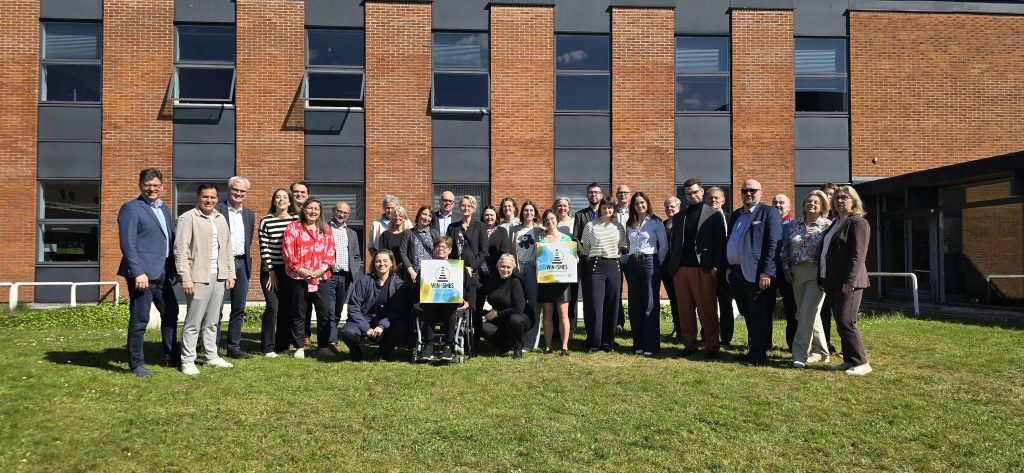
Tunnelma oli monella tavoin sama kuin meillä 70-luvun lopussa ja 80-luvun alussa.
WIN4SME-hankkeen teemana ovat Work Place Innovations – WPIs, suomeksi sanatarkasti työpaikkainnovaatiot. Termi on monivivahteinen ja voidaan ymmärtää niin englanniksi kuin suomeksikin sanottuna kahdella tavalla: työpaikalla tehtävät innovaatiot tai työpaikkaa ja työolosuhteita koskevat ja niitä parantavat ja toimintaa sitä kautta tehostavat innovaatiot. Virallinen merkitys, joka tulee Euroopan unionin taholta, on jälkimmäinen, ja merkitykset menevät osin päällekkäin.
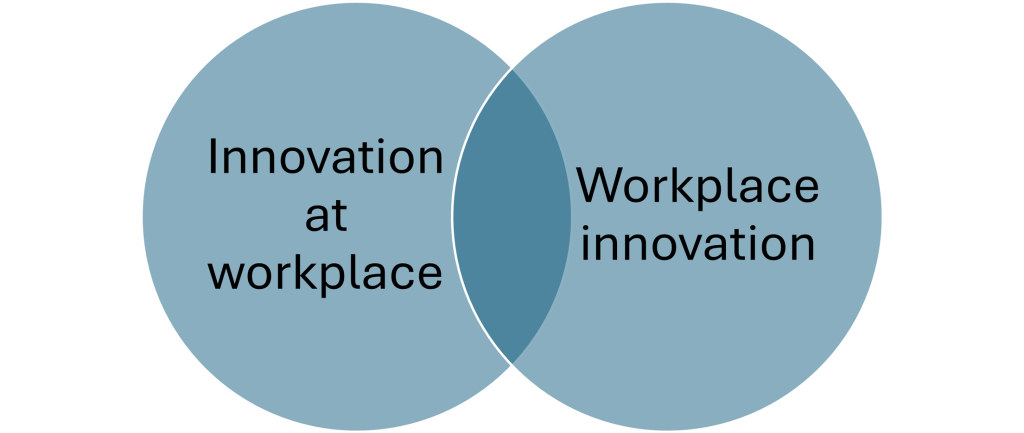
Työpaikoilla tehdään paljon innovaatioita, jotka liittyvät muuhun kuin työolosuhteiden kehittämiseen. On prosessien tehostamista, tuotteiden uudistamista ja uusien tuotteiden kehittämistä, jopa kokonaisia uusia teknologioita. Jos niihin ei millään tavalla liity organisaation ja työolosuhteiden kehittäminen, ne eivät kuulu WPI-kastiin. Tämän eron hahmottaminen tuntuu olevan monelle vaikeata, etenkin jos taustana on hierarkkinen johtamiskulttuuri ja / tai suuret valtaetäisyydet. Ilmeisesti juuri siksi WIN4SME-projektin puitteissa kerätyistä parhaista WPI käytännöistä monet olivatkin lähempänä Innovation at workplace -käytäntöjä.
Saattaa olla, että nykyisellä uuskonservatiivisella ilmapiirilläkin oli vaikutuksensa kertyneisiin parhaisiin käytäntöihin ja partnerien äänestykseen siitä, mitkä käytänteistä liitetään hankkeen tuotoksiin kuuluvaan Best Practices – dokumenttiin: Ei ehkä haluttu antaa liian DEI-myönteistä kuvaa itsestään.
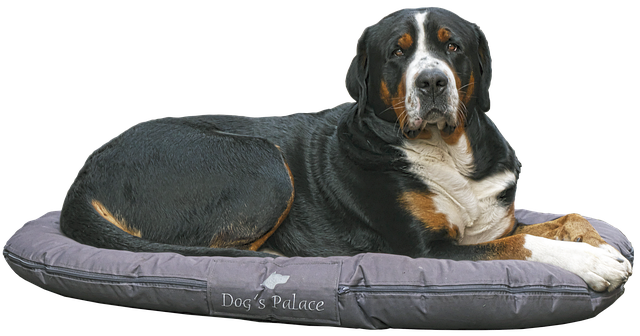
In English
Spring rushes…
In the past, spring rushes were said to last as long as it took to plough or sow the fields after the frost had melted. Those who did not have land or who did not otherwise do agricultural work could not possibly be in a hurry.
Today, fewer and fewer people do farm work – at least not to make a living – but despite this, spring rushes start earlier and last longer and burden more and more people. School test and exam rushes, preparations for spring parties, tidying up the cottage… Not to mention adult’s works like business trips, meetings, financial statements and general meetings. Everyone will surely recognize the phenomenon. When the sun began to rise higher and higher after winter and darkness, people’s activity also began to increase. Those who did not have time to join the rush were trampled underfoot.
Figuratively, and sometimes literally.

In addition to recovering from the organizational change, selecting students and courses for the masters school and other routines, this spring has been marked by two project meetings and preparations for them: Easy Energy’s two-day workshop in Pori at the beginning of April, and WIN4SME’s three-day workshop and Train the Trainer training in Kolding, Denmark, at the beginning of May. The pace has been such that you have to really try to remember what has happened in between.
Apparently, nothing at all…
At the same time as Easy Energy, there was also an international event, the International Days and the National Training Days for Intensive Care Nurses, on SAMK’s Pori campus. Thus, there was plenty of activities. In addition to the official program of the meeting, which included, among other things, a presentation of the Pori campus’s solar power and geothermal systems and the Kirkkokallio eco-industrial park, we also presented – with an emphasis on the energy theme – the Pori brewing culture, construction before and now (Viikkari and Kuukkari, the Housing fair area, Kivipori and the Swimming Hall), we explained that Pori’s history is illuminated by fires, and we got to know Porin Puuvilla, which, when completed, was the largest – and only – shopping centre in the Nordic countries utilizing solar power and geothermal heat, and which also burned down a few times in its former life. As if to confirm all this, the Pori Red Rooster struck again, and our guests were able to watch from the stands how quickly the fire engines raced into the yard after the alarm. Our tour of Pori’s sites ended at the Art Museum, which – surprise, surprise – had also recently been repaired after the fire.

The guests’ final comment was that Pori is clearly a lively city, inhabited by the happiest people in the world, and in its art museum you can enjoy a good dinner in addition to art experiences.
The WIN4SME meeting in Kolding, Denmark, included a one-day workshop and a two-day Train the Trainer training, which was led by representatives of SAMK. The meeting was held at the premises of one of the project’s Danish partners, the International Business College IBC. The premises were mainly on one level and clearly comfortable, with a water theme in the central lobby and many seating areas both indoors and outdoors. Kolding, a city of about 65,000 inhabitants (100,000 if you take the countryside into account), is located in the southern part of Jutland, close to Billund and Legoland, so spring was much longer there than here. The lilacs, bird cherry, rapeseed and canola were blooming, the trees had leaves and the temperature was between 15 and 20 degrees during the day, and much higher in the sun. Despite that, and even though you could see people dressed very lightly in the city, IBC students and staff invariably followed a casual but correct dress code. Otherwise, the campus impressed with its organization and cleanliness. Waste sorting worked, students seemed to pay for their meals and other purchases at self-service checkouts, studies (group work, homework…?) were done together outdoors and indoors, students socialized with each other, not with their cell phones, and the work week ended on Friday with teachers jamming and musical performances, which at least 500 students gathered to watch and sing along… In fact, the whole city seemed clean and safe.

The atmosphere was in many ways the same as it was in Finland in the late 70s and early 80s.
The theme of the WIN4SME project is Work Place Innovations – WPIs. The term is multi-faceted and can be understood in two ways in both English and Finnish: innovations made in the workplace or innovations that affect the workplace and working conditions and improve them, thereby making operations more efficient. The official meaning, which comes from the European Union, is the latter, and the meanings overlap to some extent.

There are many innovations in the workplace that are related to other things than the development of working conditions. There are process improvements, product renewal and the development of new products, even entire new technologies. If they are not in any way related to the development of the organization and working conditions, they do not belong to the WPIs. This difference seems to be difficult for many to perceive, especially if the background is a hierarchical management culture and / or large power distances. Apparently, this is precisely why many of the best WPI practices collected within the framework of the WIN4SME project were closer to Innovation at workplace practices.
It may be that the current neoconservative atmosphere also had an impact on the collected best practices and the partners’ voting on which practices will be included in the Best Practices document, which is part of the project’s output: Perhaps they did not want to give an image of themselves that would be considered too DEI-positive.

Artikkeli on kirjoitettu Euroopan unionin Erasmus+-ohjelman rahoittaman WIN4SMEs-hankkeen ja Interreg BSR-ohjelman rahoittaman Easy Energy-hankkeen puitteissa. Vastuu artikkelissa esitetyistä näkemyksistä on yksinomaan kirjoittajilla.
This article was written in the framework of the project Win4SMEs funded by Erasmus+ and project Easy Energy funded by Interreg BSR programmes of the European Union. The sole responsibility for the views expressed in this article lies with the authors.

